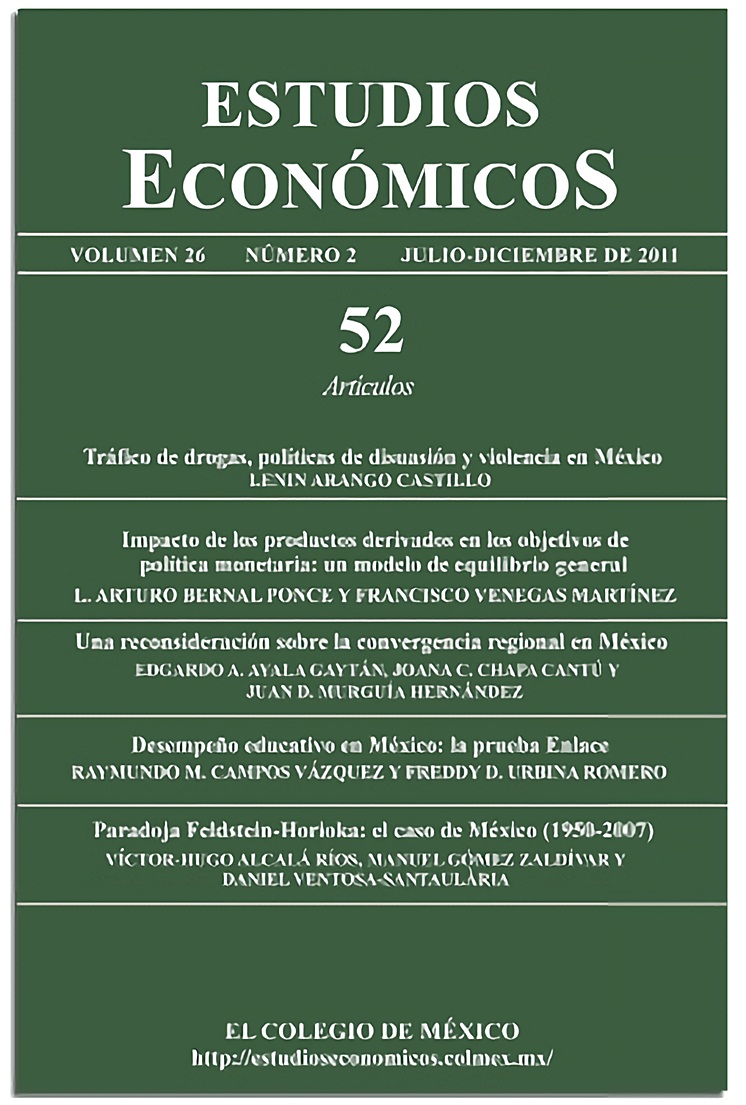Published 2011-07-01
Keywords
- Feldstein-Horioka Paradox,
- cointegration,
- structural changes
How to Cite
Abstract
The Feldstein-Horioka Paradox is an empirical regularity that calls into question the validity of the assumption about perfect capital mobility. We study the savings-investment relationship in Mexico from 1950 to 2007 by means of a cointegration analysis that allows for structural breaks. The results suggest that there was not capital mobility until 1982. This coincides with the international debt crisis and is in the midst of the liberalization process of the capital flows. Evidence suggests that there was a strong savings-investment relationship until 1982, but it weakened afterwards. This evidence is contrary to the aforementioned Paradox.

